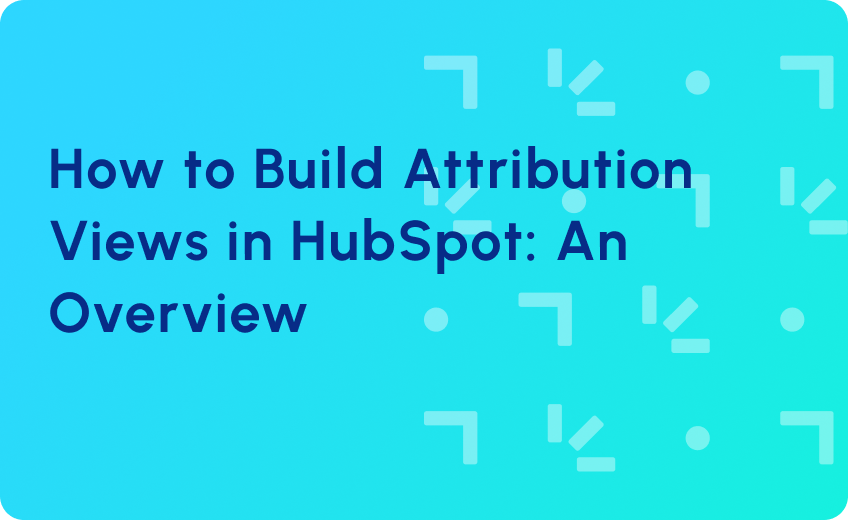
7 HubSpot Workflow Mistakes [+ How to Fix Them]
Spent hours on HubSpot workflows? Still feel lost? Leads drop. The pipeline feels broken. Attribution is unclear.
You wanted to simplify ops, nurture leads, and boost handoffs. But your workflows aren’t working. Why? It’s not HubSpot’s fault. It’s poor triggers, no goals, messy data… the usual suspects behind most HubSpot lead nurture issues that break your funnel.
Let’s walk through the most common HubSpot workflow mistakes and how to fix them with HubSpot workflow optimization for scalable, predictable results.
1. Using Incomplete or Broad Enrollment Triggers
Most HubSpot workflow issues start here. Triggers that are too broad or generic invite the wrong contacts in, while overly narrow ones miss valid prospects.
What’s at stake:
- Poor lead routing
- Mistimed messaging
- Low engagement
How to fix it:
- Avoid “form fill = enroll” logic unless it’s paired with specific attributes or exclusions.
- Define enrollment triggers using a mix of lifecycle stage, funnel activity, and behavioral data.
- Use HubSpot enrollment triggers with clear intent, not assumptions.
2. Trying to Do Too Much in One Workflow
All-in-one workflows that mix nurturing, scoring, internal alerts, and lifecycle stage changes become difficult to manage and nearly impossible to debug.
What’s at stake:
- Harder troubleshooting
- Poor performance attribution
- Hidden HubSpot automation errors
How to fix it:
- Break large workflows into focused units.
- Assign each one a specific objective: lead nurturing, scoring, or handoff.
This structure supports better workflow optimization and visibility. But isn’t modular automation harder to manage? No. It’s easier to scale and maintain because each component has a clear function.
3. Skipping Real-World Testing
Launching workflows without testing logic, delays, and outcomes is risky. Many assume visual review is enough. But it’s not.
What’s at stake:
- Broken actions
- Misrouted leads
- Pipeline noise
How to fix it:
- Create test records that match exact trigger conditions.
- Validate the contact journey, delays, logic splits, and exit conditions before going live.
Pro tip: The best way to fix HubSpot workflow issues in B2B? Use the “Test” feature, but also run real contact simulations to catch logic flaws.
4. Missing Exit Goals and Re-Enrollment Logic
Workflows that lack exit criteria or have incorrect re-entry logic loop users unnecessarily or stall progress.
What’s at stake: Prospects get stuck or receive outdated content, disrupting both nurture and conversion.
How to fix it:
- Set clear workflow goals tied to meaningful actions.
- Define re-enrollment criteria based on use case, like inactivity for re-engagement or form fills for re-entry.
But should all workflows allow re-enrollment? No. Limit it based on journey stage and purpose.
5. Poor Data Sync Between HubSpot and CRM
Many workflow breakdowns come from conflicting data updates between systems like Salesforce and HubSpot. Fields like lead status or lifecycle stage are especially sensitive.
What’s at stake:
- Duplicates
- Incorrect segmentation
- Broken downstream reporting
How to fix it:
- Establish clear field ownership.
- Ensure your HubSpot CRM workflows update only the fields they own.
- Document sync rules and review them routinely.
6. Inconsistent Lead Routing Logic
Lead routing is often overlooked in workflows. Without structured logic, reps get leads too late or the wrong ones entirely.
What’s at stake:
- Slower response times
- Low conversion from MQL to SQL
- Missed opportunities
How to fix it:
- Use automated lead routing with assignment rules tied to geography, persona, or funnel stage.
- Ensure routing steps are in separate workflows from nurturing logic.
7. Workflow Sprawl and Poor Organization
With no standard naming conventions or folder structure, teams quickly lose visibility over what’s active, what’s redundant, and what needs fixing.
What’s at stake:
- Workflow duplication
- Logic conflicts
- Version control issues
How to fix it:
- Create a consistent naming structure.
- Group workflows by function: Nurture, Lifecycle, Operations.
- Review automation quarterly and deprecate unused flows.
But is foldering necessary if you use search? Yes. Folders help during audits, onboarding, and cross-functional alignment.
Final Thoughts
HubSpot workflow mistakes create noise, inefficiency, and data distrust. But if HubSpot workflow optimization is done right, you get scalable, revenue-aligned systems that power modern B2B growth.
Fixing these common issues makes your workflows cleaner, marketing more accountable, sales more empowered, and data more reliable.
Looking to optimize your current setup? Our RevOps team specializes in HubSpot workflow optimization and B2B campaign architecture. Let’s build workflows that perform.




